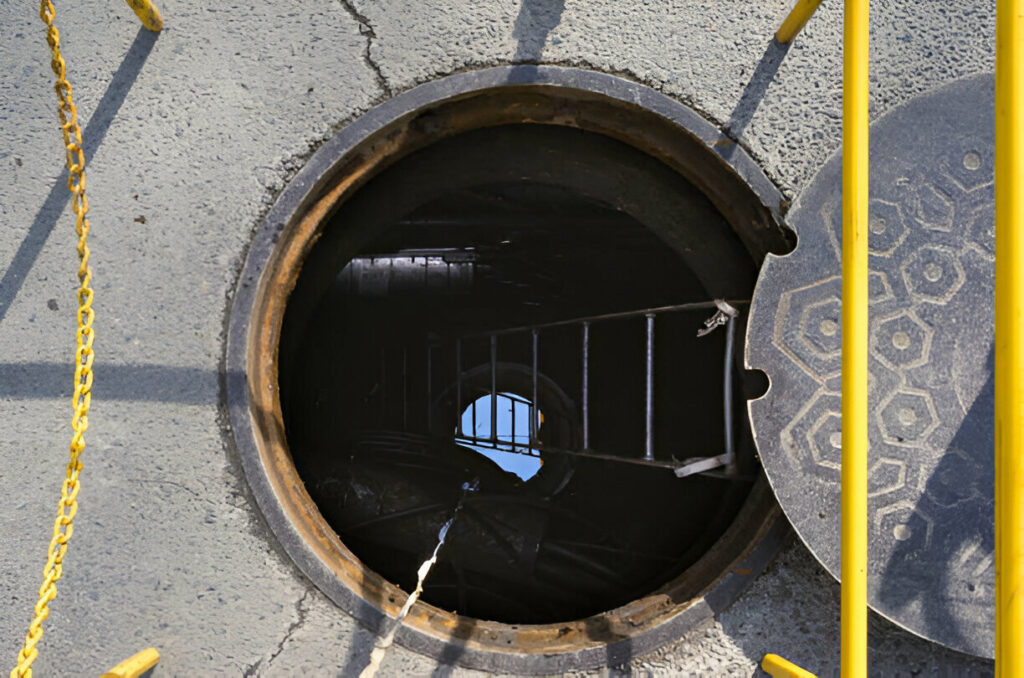A blocked drain pipe outside your home can cause significant problems, from water damage to unpleasant odors and potential health hazards. Understanding the causes of outdoor drain blockages, recognizing the signs early, and knowing how to effectively clear them can save you time, money, and stress.
Common Causes of Blocked Drain Pipes Outside
- Leaves and Debris: Fallen leaves, twigs, and other debris are common culprits in blocking outdoor drains, especially during autumn.
- Soil and Sediment: Over time, soil, silt, and other sediments can accumulate in the drain pipes, causing blockages.
- Tree Roots: Tree roots can infiltrate drain pipes in their search for water, leading to significant blockages and damage.
- Grease and Fat: Cooking fats and oils poured down sinks can solidify and build up in outdoor drains.
- Foreign Objects: Items like plastic bags, toys, and other foreign objects can find their way into outdoor drains, causing obstructions.
Signs of a Blocked Drain Pipe Outside
Recognizing the early signs of a blocked drain pipe can help you address the issue before it becomes severe:
- Slow Drainage: Water pooling around drains or slow water flow in gutters and downspouts.
- Bad Odors: Unpleasant smells coming from drains indicate stagnant water and trapped debris.
- Overflowing Water: Water overflowing from gullies, manholes, or gutters during rainfall.
- Gurgling Sounds: Unusual gurgling noises from outdoor drains or downpipes.
- Damp Patches: Unexplained damp or waterlogged patches in the garden or near the drain location.
Solutions for Unblocking Outdoor Drain Pipes
- Manual Removal: Start by manually removing any visible debris around the drain cover. Wear gloves and use appropriate tools to lift the grate and clear the blockage.
- Plunging: Use a plunger to create suction and dislodge the blockage. Ensure a tight seal around the drain for effective plunging.
- Drain Rods: Drain rods can be inserted into the pipe to push through and break up the blockage. These flexible rods are ideal for reaching deeper into the drain.
- High-Pressure Water Jetting: For stubborn blockages, high-pressure water jetting can be highly effective. This method uses a powerful jet of water to blast through the obstruction.
- Chemical Drain Cleaners: Use chemical drain cleaners with caution, as they can be harmful to the environment and may damage pipes if overused. Follow the instructions carefully.
- Professional Help: If the blockage is severe or persistent, it’s best to call a professional plumber or drainage specialist. They have the expertise and equipment to handle tough blockages safely and efficiently.
Preventative Measures
Preventing future blockages can save you the hassle of dealing with blocked drain pipes again:
- Regular Maintenance: Schedule routine inspections and cleaning of outdoor drains to remove debris before it causes a blockage.
- Install Drain Guards: Use drain guards or covers to prevent leaves, twigs, and other debris from entering the drains.
- Proper Disposal: Avoid pouring grease, fat, or non-biodegradable items down sinks or drains. Dispose of them properly.
- Root Management: If you have trees near your drainage system, consider installing root barriers or regularly check for root intrusion.
Advanced Techniques and Technologies for Unblocking Outdoor Drains
In addition to the common solutions mentioned earlier, several advanced techniques and technologies can assist in unblocking outdoor drain pipes:
- CCTV Drain Surveys: This involves using a small, waterproof camera to inspect the inside of the drain pipes. It helps identify the exact location and nature of the blockage, which can be particularly useful for complex or deep-seated issues. The visual feedback allows for precise and targeted interventions.
- Electro-Mechanical Cleaning: This method employs an electrically powered device to rotate a flexible cable with a cutting or boring head. It’s effective for removing stubborn blockages like tree roots or solidified grease. The mechanical action cuts through the obstruction, restoring the flow in the pipe.
- Pipe Relining: For damaged pipes that are prone to frequent blockages, pipe relining is an excellent solution. This trenchless technology involves inserting a resin-coated liner into the damaged pipe. Once cured, it forms a new, seamless pipe within the old one, eliminating cracks and preventing future root intrusion.
- Vacuum Excavation: This technique uses high-powered vacuums to remove debris from drains. It’s particularly effective for large accumulations of mud, silt, or construction debris. Vacuum excavation is less invasive and more efficient compared to traditional digging methods.
Understanding Environmental Impact and Safety Considerations
When dealing with blocked outdoor drains, it’s important to consider the environmental impact and ensure safety:
- Eco-Friendly Cleaning Solutions: Opt for biodegradable and non-toxic drain cleaners to minimize environmental harm. These products break down naturally and are less likely to contaminate soil and water sources.
- Safe Handling of Chemicals: If using chemical drain cleaners, wear protective gear such as gloves and goggles to prevent skin and eye irritation. Follow the manufacturer’s instructions carefully to avoid accidents or damage to the pipes.
- Proper Waste Disposal: Ensure that all debris removed from the drain is disposed of responsibly. Avoid dumping waste into nearby water sources or areas where it can cause further blockages.
- Professional Licensing and Insurance: When hiring a professional plumber, verify their credentials. Licensed and insured plumbers are more likely to provide quality service and are accountable for their work.
Dealing with Emergency Blockages
In some cases, a blocked outdoor drain can escalate to an emergency, causing flooding or severe property damage. Here’s what to do in such situations:
- Immediate Containment: If water is flooding your property, try to contain it using sandbags or barriers. This can prevent water from entering your home or causing extensive damage.
- Shut Off Water Supply: Turn off the main water supply to prevent additional water from exacerbating the blockage. This is a critical step in managing the situation until help arrives.
- Call for Emergency Services: Contact a professional plumbing service that offers emergency assistance. Many companies provide 24/7 services for urgent situations.
- Document the Damage: Take photographs and notes of the damage for insurance purposes. This documentation can support your claim and help with the repair process.
Long-Term Maintenance Strategies
To avoid the recurrence of blocked outdoor drain pipes, implement these long-term maintenance strategies:
- Seasonal Inspections: Conduct thorough inspections of your drainage system during seasonal changes, particularly before and after autumn when leaf fall is at its peak.
- Routine Professional Cleaning: Schedule regular professional drain cleaning services. These routine cleanings can remove minor buildups before they develop into significant blockages.
- Upgrade Drainage Infrastructure: If your property frequently experiences drainage issues, consider upgrading the drainage infrastructure. Installing larger pipes, additional drains, or advanced filtration systems can enhance the system’s capacity and efficiency.
- Community Awareness: If you live in a community with shared drainage systems, promote awareness about proper waste disposal and drainage maintenance. Community efforts can significantly reduce the overall risk of blockages.
Conclusion!!
Blocked outdoor drain pipes can be a nuisance, but understanding the causes and knowing how to address and prevent them can save you time, money, and frustration. Regular maintenance, proper waste disposal, and timely intervention are key to keeping your drainage system in good working order. If you encounter a severe blockage, don’t hesitate to seek professional assistance to ensure the problem is resolved effectively and safely.







